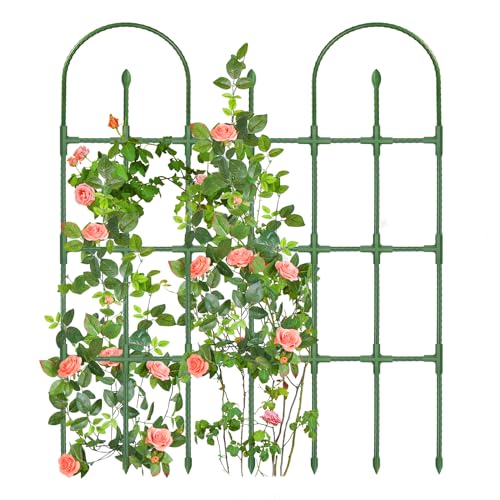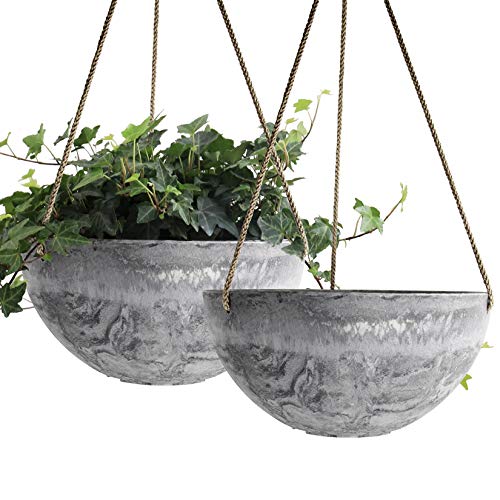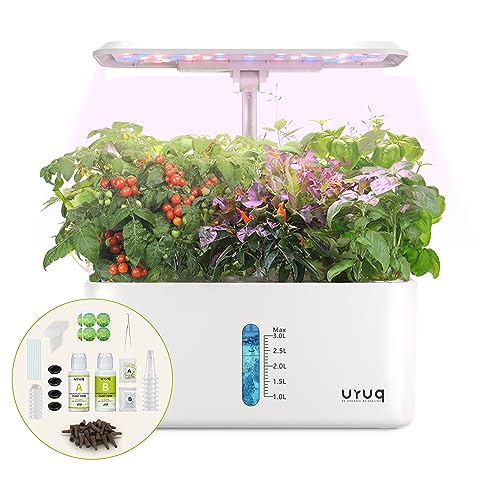‘I’ve seen an entirely different side to this city, and it’s wild’ – what Singapore can teach us about how to live in nature
This jungle-rich, micro metropolis is paving the way in cultivating urban greenery
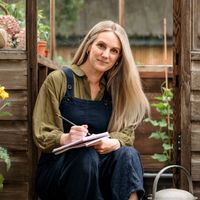
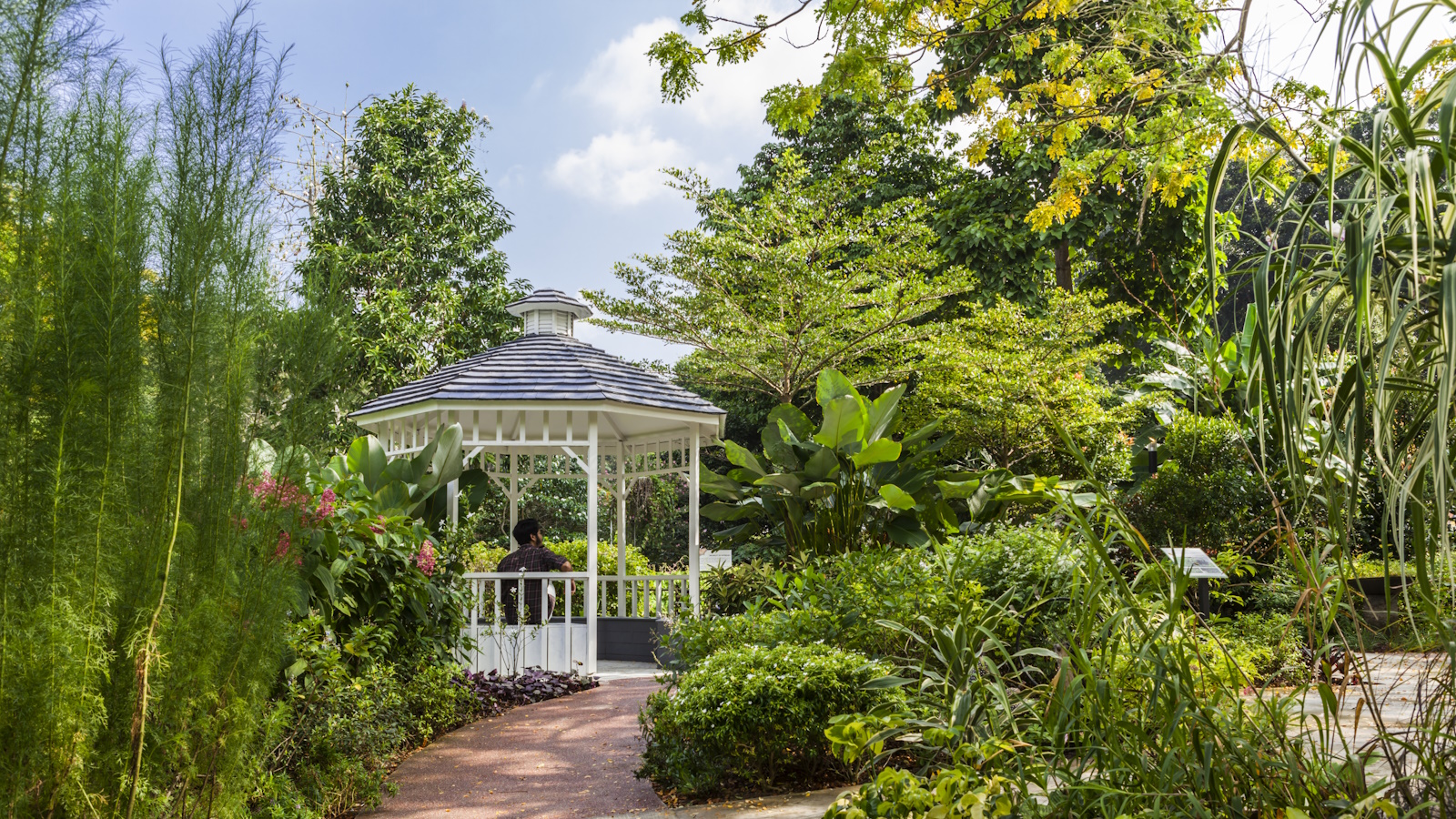
Driving along the highway in Singapore is a curiously tranquil experience. To begin with, I’m not sure why I feel so relaxed after a 12 hour night flight, but as I observe the landscape dreamily unfold it slowly becomes clear - I’m surrounded by beautiful, towering trees, lush foliage, invigorating tropical flowers and immense vegetation. In the center of a city.
I wasn't expecting it to be my first impression of this city state - known as a global center for finance, with cutting edge architecture and a culturally rich food scene. But on a recent visit I saw an entirely different side to Singapore. A very verdant one. It encompassed vast jungle canopies over the highways, vertical planting along much of the city’s towering skyline, lush balcony garden ideas, and urban growing initiatives established within the community.
I’ve been an advocate of urban gardening for the best part of 20 years, but what I saw there was on another level. So, what can we learn from the pioneering urban horticulture in Singapore to help us grow and embrace nature within a city? I spoke to Boyi Zhou, Deputy Director of the National Biodiversity Center at Singapore National Parks Board to find out more.
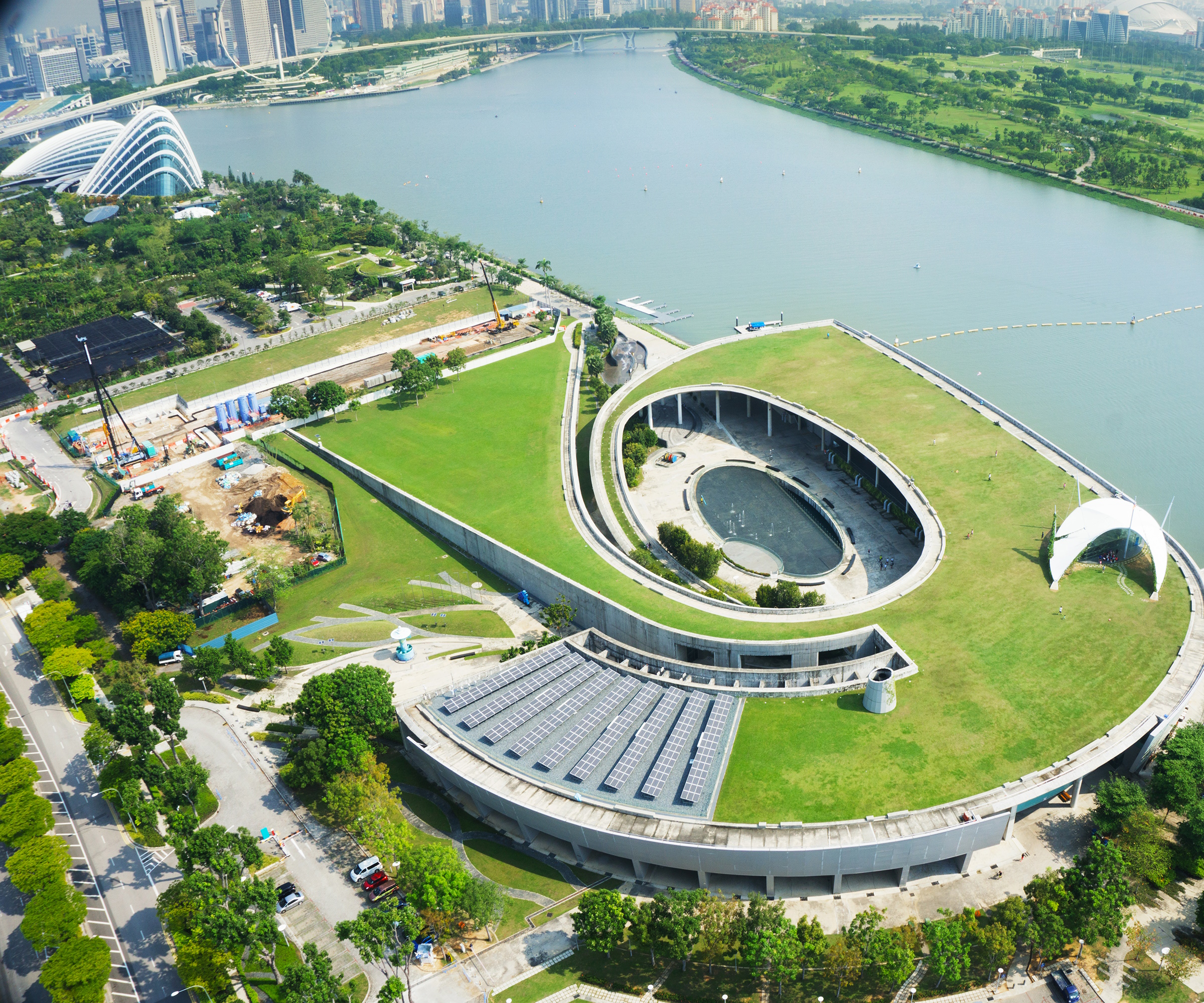
Solar panels are a key feature of green roofs in Singapore
A pioneering vision to create a city in nature
Singapore National Parks Board (NParks) has an ambitious plan - to transform the island state into a ‘city in nature’. This vision aims to meet a number of key environmental goals by 2030, including creating 200 hectares of skyrise greenery, and planting one million trees.
‘To date, we have planted 640,000 new trees since 2020, and we are on track to realize our goal three years ahead of schedule,’ says Boyi. 'These trees are planted throughout the whole of Singapore, including our streetscapes, gardens, parks and park connectors, and nature reserves. By ramping up our tree-planting efforts, this will improve our urban environment and enhance our resilience towards climate change.'
Inspired by the sheer scale and breadth of urban horticulture in Singapore, here are three key learnings I took from my time there, and how you can embrace these gardening ideas and initiatives wherever you live.
Lessons in fostering climate resilience in a city
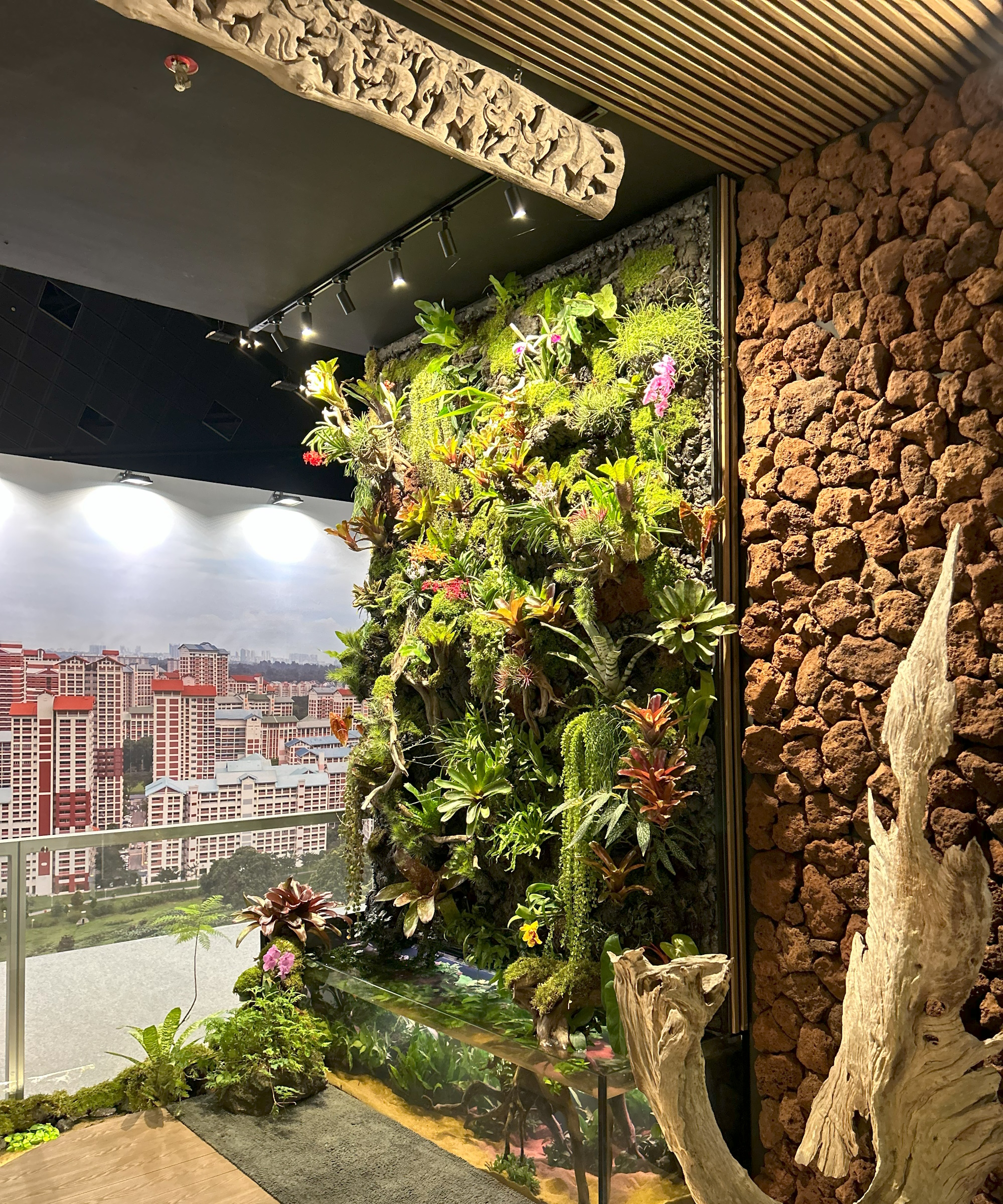
Vertical, green walls are a design feature in many city apartments
Restoring and cultivating nature within the built environment isn’t a straightforward task, but it’s one this city has wholly embraced. The challenges are clear: land is scarce and comes at a premium, the climate is tropical 12 months of the year, and the building of new skyscrapers shows no signs of abating.
Design expertise in your inbox – from inspiring decorating ideas and beautiful celebrity homes to practical gardening advice and shopping round-ups.
Hot, humid temperatures and an intense concentration of people in a limited space means plants, trees and greenery have never been more important.
‘The cooling, air purifying, and therapeutic effects of plants are increasingly vital to future proof this city,’ says Boyi. 'The integration of green spaces into Singapore’s urban landscape not only improves air quality and thermal comfort, but also exemplifies how city dwellers can seamlessly live, work, and relax within nature.'
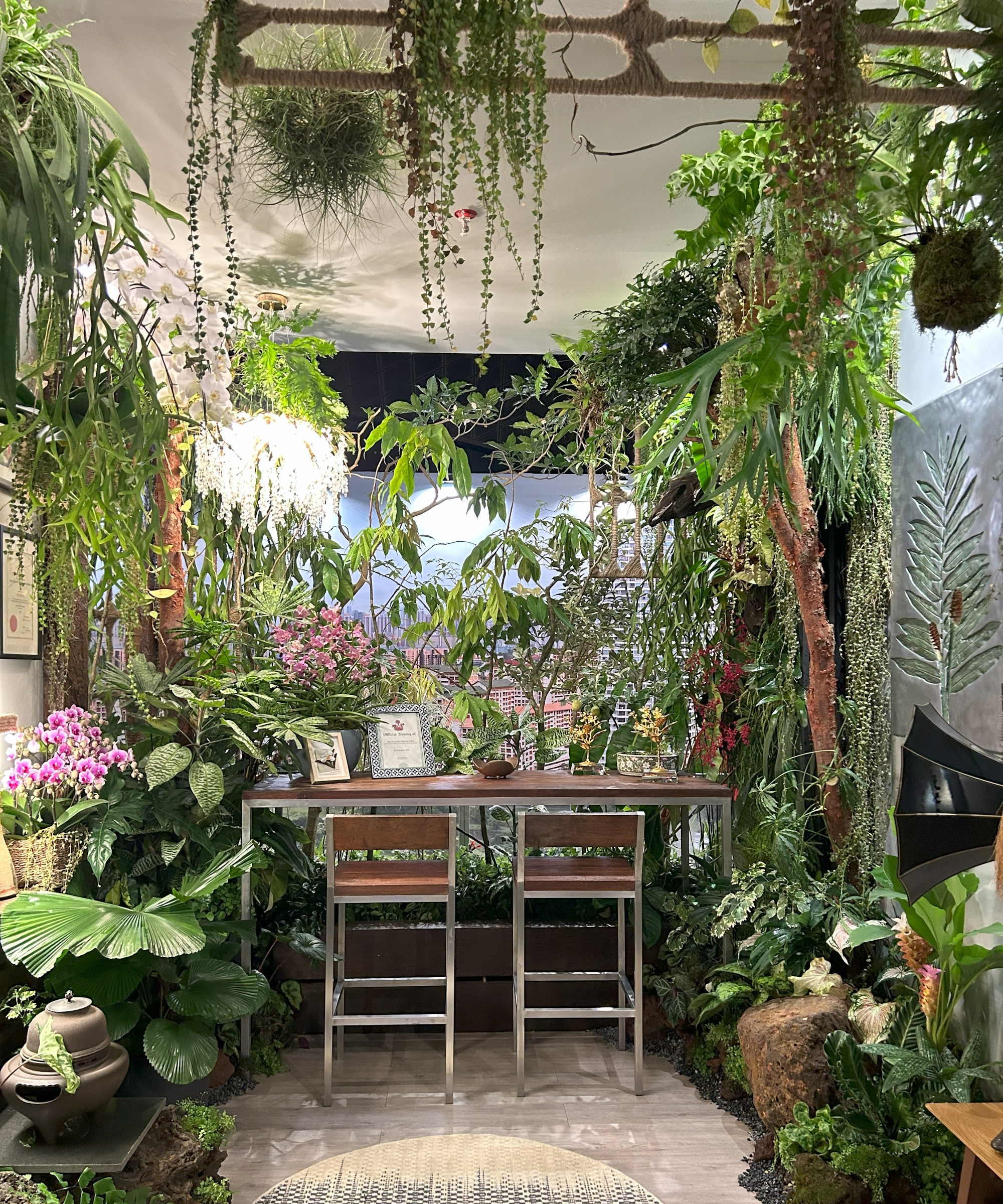
Getting creative with growing in small spaces is key to growing in a city
The sight of vertical living walls, rooftop gardens, greenery cascading from high-rise balcony terraces, and green roofs is everywhere - and it feels genuinely calming. To date, approximately 193ha of skyrise greenery exists in Singapore, and what this showcases is that even within limited urban space, our connection to nature within cities can still thrive.
When it comes to fostering this idea in your home, consider choosing plants with air purifying qualities or plants for a living wall that can help to reduce pollution and also clean the air.
Lessons in integrating nature within a cityscape
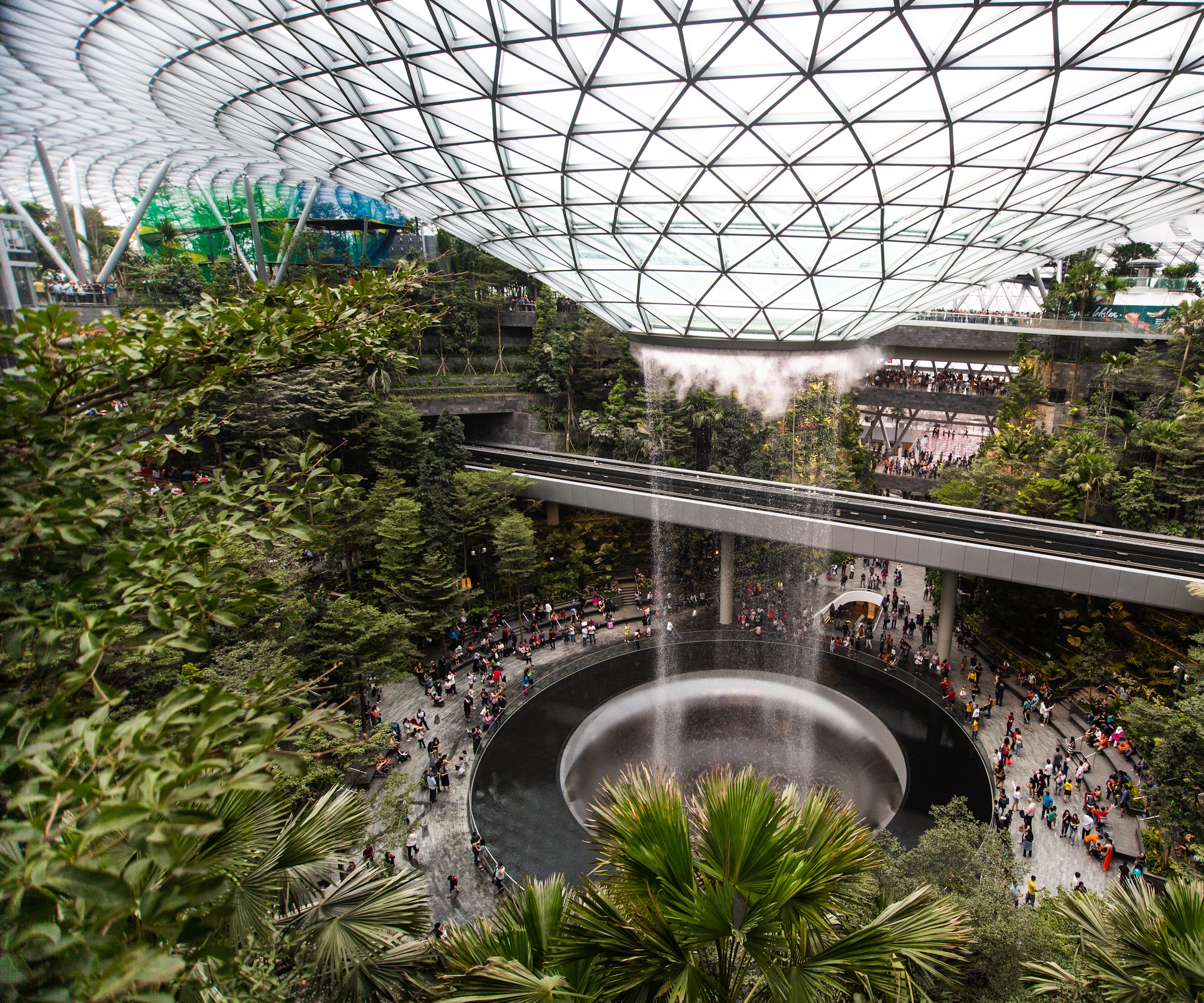
Changi International Airport has more than 100,000 species of plants and shrubs growing in its indoor jungle
Everywhere you look in Singapore, greenery forms an integral part of the cityscape. The skyscrapers are no exception, and neither is the airport.
Built in 2019, Changi International Airport features a 6-acre indoor forest and the world’s largest indoor waterfall, which is surrounded by more than 2000 trees and 100,000 species of plants and shrubs. It is a marvellous and quite frankly astounding example of immersive nature in what is, arguably, one of the most stressful places to be - an airport.
It features a rainwater harvesting system, which channels storm water into a 130ft-tall vortex to create the mesmerizing waterfall. The vegetation is planted on terraces over 10 stories to create the most incredible indoor jungle experience.
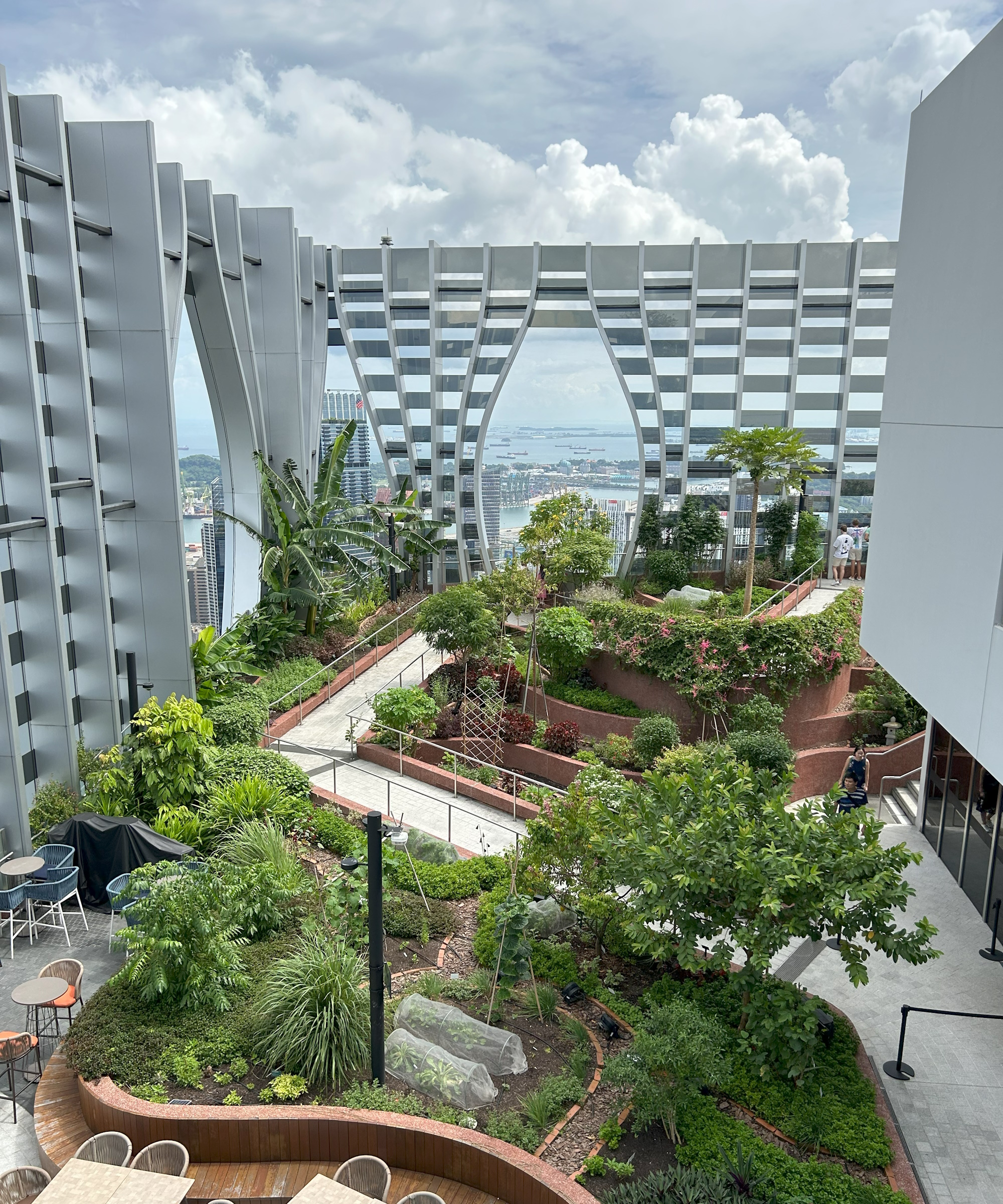
The lush rooftop garden at CapitaSpring is a restorative urban oasis for busy executives
One of the most delightful facts I discovered is that when a new skyscraper is built in Singapore, by law the amount of greenery and land lost to that building has to be replaced within the fabric of the new structure, be that through internal planting or a rooftop garden, for example.
The CapitaSpring tower within the city's central business district does just this. Completed in 2022, its rooftop garden (pictured above) and lush, integrated planting scheme laced into the fabric of the building is a wonderful example of biophilic design in a city.
Housing more than 80,000 plants and trees, one of its key aims is to provide an urban oasis for stressed city workers and residents, allowing them the chance to reset and recharge their mental and physical health.
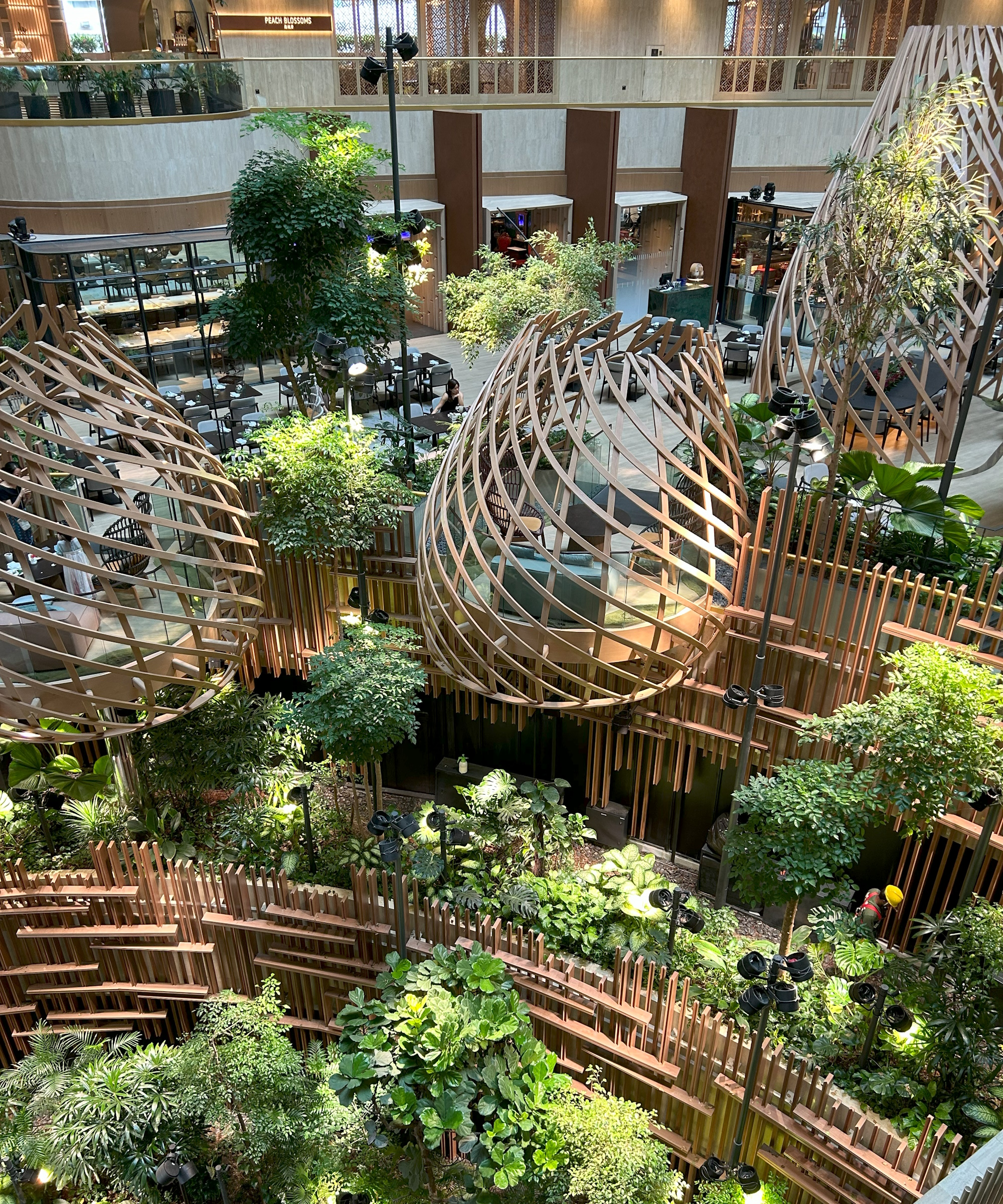
The indoor garden at the Park Royal Collection Marina Bay hotel is calming and helps to purify the air
It's not just rooftops that feature urban jungles, however. There are many indoor gardens, too, which feature tropical, restorative planting. The indoor oasis within the Park Royal Collection Marina Bay hotel (pictured above) includes 9ft high towering fiddle leaf figs in amongst 2,400 plants and trees.
How to emulate these ideas? Well, for city dwellers with very little space, it’s about working out what you can grow vertically (both up and down) rather than horizontally. Look for height and depth to add cascading, vining, trailing or indoor hanging plants to your space. Consider a diverse range of planting within a living wall, and - most importantly - get creative with space.
Boyi tells me that many of the large urban oasis gardens are controlled by energy-efficient, automated irrigation systems, which 'reduce water wastage and the the long-term cost of maintaining vertical greenery'. While this isn't something we would embrace in our own homes, there are planting technologies, such as hydroponic growing systems, where watering is controlled by an app. Many of these are specifically designed for apartment living and urban gardening, and they help city dwellers to cultivate a wider range of food and flower crops indoors or on a small balcony.
Lessons in nurturing community through gardening
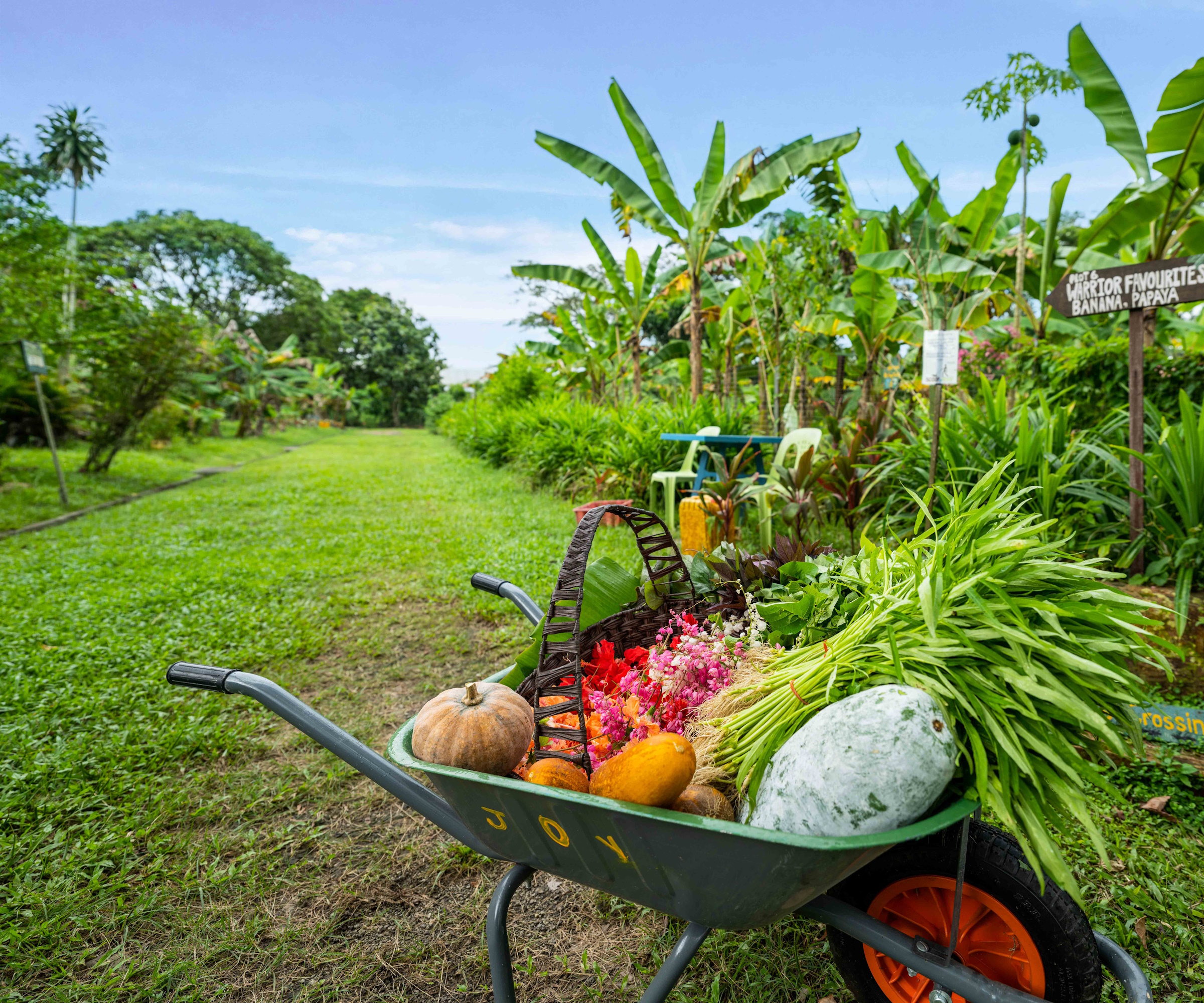
The breadth of crops that grow in this tropical climate is huge
The 'city in nature' goal is very much a community one. The planting of one million new trees, as well as the creation of therapeutic gardens, specifically for the benefit of older members of society, is all being done at a grassroots level.
'In partnering with the community, we aim to inspire and bring Singaporeans together to be stewards for nature,' says Boyi.
Another important initiative led by NParks is 'Community in Bloom' - a national gardening movement that aims to foster community bonding and promote gardening culture and green therapy to help improve wellbeing.
'It actively encourages residents and institutions to create and maintain communal gardens across the island,' Boyi explains. 'Today, we have more than 2,000 thriving community garden groups. The involvement of communities in creating and maintaining rooftop edible, ornamental and biodiversity gardens has been an effective way to foster a sense of ownership, promoting environmental stewardship, and creating sustainable, liveable urban environments.'
There are community gardening groups, clubs and societies in almost all towns and cities. Check your local extension service, garden center or library to find out what's going on in your area and how to get involved.
Experiencing real ingenuity when it comes to urban horticulture in Singapore wasn’t just inspiring, it was hugely motivating and opened my eyes to innovative and creative ways we can all embrace nature and encourage greenery in our cities. For even more practical advice on this topic, you might find our guides to plants for privacy on a balcony and apartment gardening useful.
Singapore Airlines offers direct flights from Changi Airport to Los Angeles, New York, San Francisco and Seattle. Singapore Airlines also flies from London Heathrow to Changi Airport four times daily.
For further information and to plan your trip to Singapore, head to Visit Singapore.
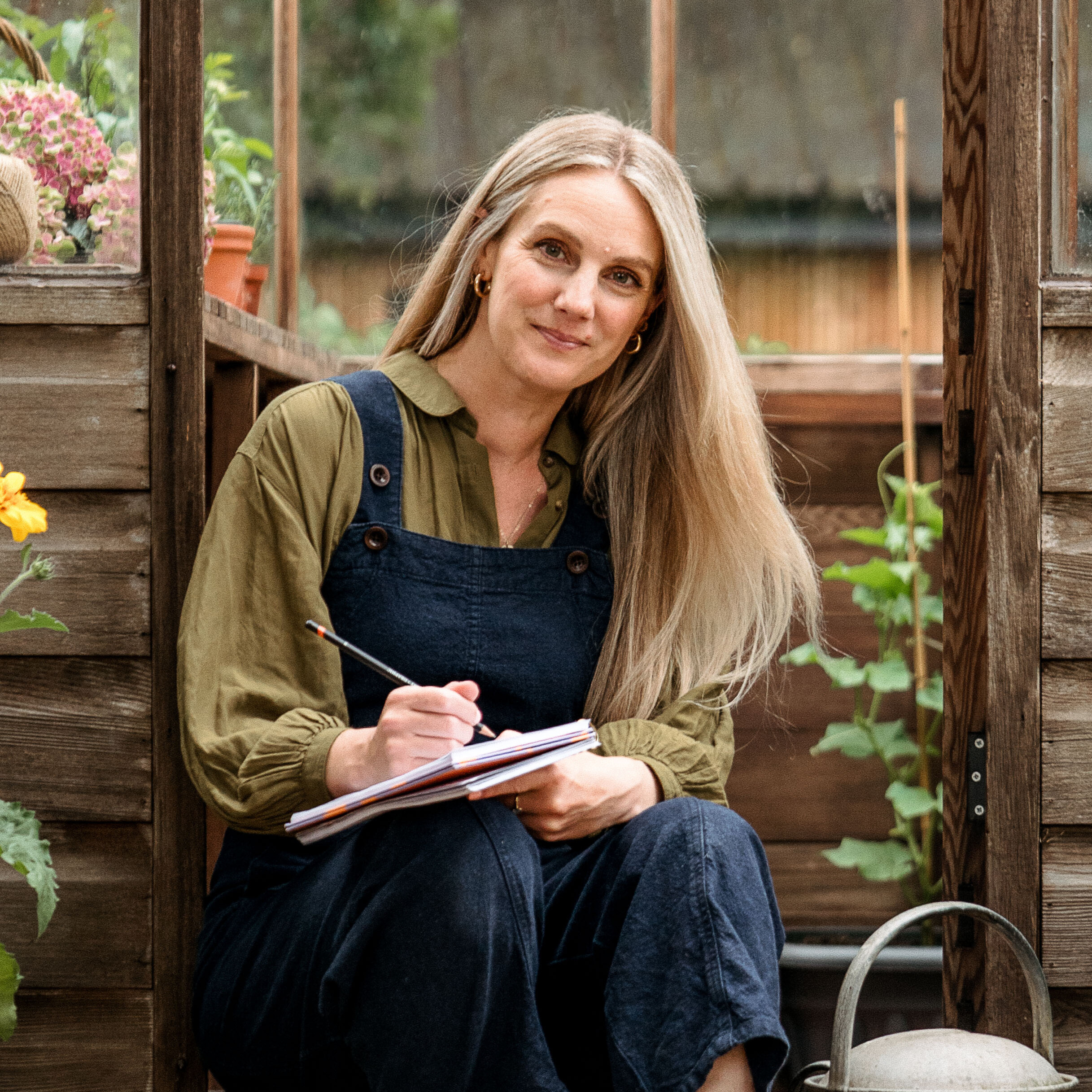
Rachel is a gardening editor, floral designer, flower grower and gardener. Her journalism career began on Country Living magazine, sparking a love of container gardening and wild planting. After several years as editor of floral art magazine The Flower Arranger, Rachel became a floral designer and stylist, before joining Homes & Gardens in 2023. She writes and presents the brand's weekly gardening and floristry social series Petals & Roots. An expert in cut flowers, she is particularly interested in sustainable gardening methods and growing flowers and herbs for wellbeing. Last summer, she was invited to Singapore to learn about the nation state's ambitious plan to create a city in nature, discovering a world of tropical planting and visionary urban horticulture.
